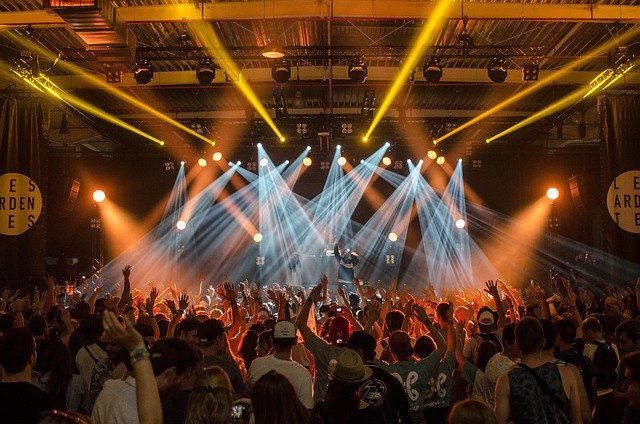Optimizing venue acoustics and sightlines for performances
Successful performances depend on clear sound and unobstructed sightlines. This article explains practical approaches for concerts, theater, galleries, festivals and livestreams, covering acoustic treatments, seating geometry, production coordination, audience flow, ticketing implications, and sustainable choices.

Acoustics and sightlines shape how audiences perceive concerts, music, theater and gallery events. Effective design balances clarity, warmth and intelligibility without creating visual obstructions. That balance matters for festivals and livestream productions as well as fixed venues: good acoustic planning and careful sightline design reduce production trade-offs, support curators and promoters, and improve ticketing accuracy by matching seats to realistic audience experience. Integrating production teams early—sound engineers, lighting designers and curators—helps ensure technical choices support artistic goals while meeting safety and sustainability targets.
Acoustics for concerts and music
For concerts and music events, manage reverberation time, early reflections and bass control. Hard surfaces increase reflections and can blur fast musical passages; strategic absorption and diffusion help retain clarity without deadening the room. Address room modes in small and medium venues through bass traps and speaker placement; in larger venues, aim for even coverage with appropriately splayed arrays and delay clusters. Measurement and tuning—using real-time analyzers and impulse response tests—identify problematic frequencies so production can apply EQ, time alignment and acoustic panels. Collaboration between venue managers and touring production ensures consistent results across different genres.
Sightlines for theater and festival stages
Sightline planning begins with sight triangles, seat rake and stage elevation. In theaters, rake and staggered seating minimize blocked views; in festival sites, temporary rigging and raised platforms require clear viewing corridors and screen placement for distant audiences. Consider sightline envelopes for performers, technical rigs and scenic elements to avoid unexpected obstructions. Visual simulation tools and simple mockups allow curators and production teams to verify that set elements, lighting rigs and speaker hangs won’t block essential sightlines from typical ticketed positions.
Gallery spaces and livestream setups
Galleries and installation spaces often host intimate performances or livestreamed events where both sight and sound are sensitive. Reflections from glass and hard floors affect speech intelligibility and microphone pickup; portable acoustic panels, floor coverings and directional microphones minimize bleed. For livestreaming, camera sightlines and framing must coexist with audience seating and circulation; plan camera positions that do not obstruct live viewers, or use remote-operated cameras and elevated platforms that respect sightlines and ADA accessibility. Audio monitoring for streams should be measured separately from the in-room mix to ensure consistent online delivery.
Venue production’s impact on audience
Production choices—speaker clusters, lighting trusses, scenic elements—directly affect audience experience. Rigging should consider both load capacity and the visual intrusion of flown elements. Coordinating staging, speaker aiming and lighting design with the curator and production manager reduces compromises that harm either sound or sight. Clear communication around set dimensions and load-in logistics helps ticketing and front-of-house plan seating maps and access routes. Sound checks and sightline rehearsals before an event reveal hidden issues and keep the audience experience consistent across performances.
Ticketing, curation, and audience flow
Seating maps and ticketing systems benefit from data-driven sightline and acoustic analysis. Where possible, integrate sightline assessments into seat maps to set realistic expectations for potential ticket buyers and to price appropriately without overstating views. Curation choices—stage orientation, set dressing, performer placement—affect how seats are valued. Crowd flow, entry points and restroom placement influence where seats should be located relative to sightlines; ensure aisles and egress routes don’t force sightline compromises. Accessibility considerations must be embedded in both sightline planning and ticketing workflows to provide equitable experiences.
Sustainability in acoustics and sightlines
Sustainable venue strategies include selecting durable, recyclable acoustic materials, reusing modular seating and risers, and choosing energy-efficient sound and lighting systems that maintain performance quality. Acoustic treatments made from reclaimed or low-VOC materials can reduce environmental impact without sacrificing function. Long-term maintenance planning—repairable mounts, modular panels and reusable rigging—lowers lifecycle costs and waste. Sustainability also intersects with audience comfort: thermally comfortable spaces often require different surface treatments, so collaborate with HVAC and acoustic consultants to balance environmental performance with acoustic and visual needs.
In summary, optimizing acoustics and sightlines requires early collaboration among curators, production teams and venue operators. Address acoustic properties, sightline geometry, livestream requirements, ticketing implications and sustainable materials as integrated elements of venue planning. Doing so supports consistent audience experiences across concerts, theater, gallery presentations and festivals while helping production teams deliver technically sound and visually clear performances.





